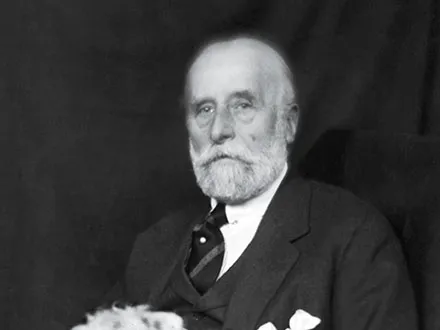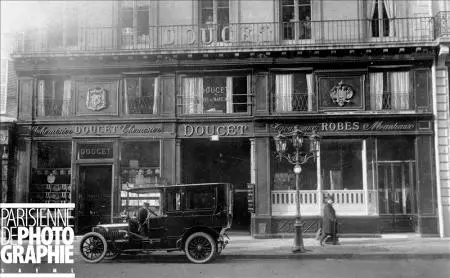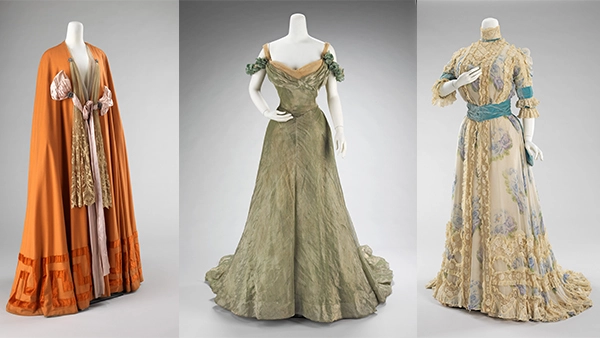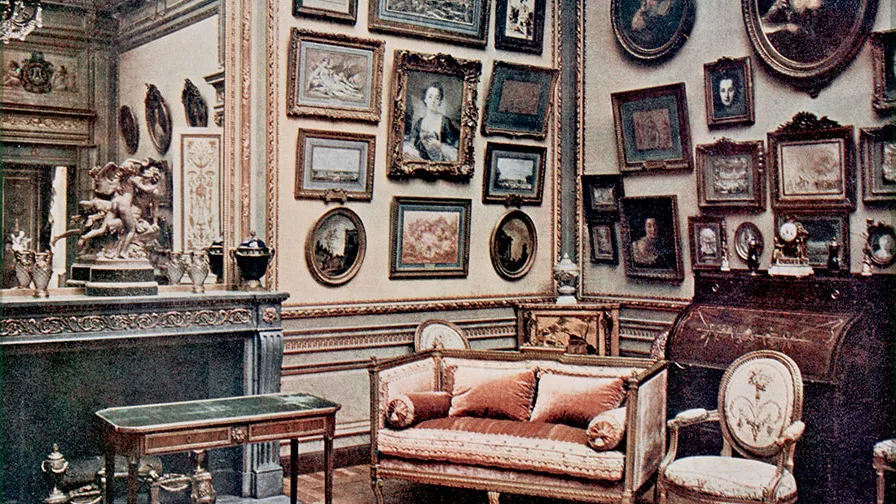
Jacques Doucet is a name that resonates deeply within both the fashion and art worlds. Renowned as one of the most influential fashion designers of the late 19th and early 20th centuries, Doucet’s work transcended mere clothing design to become an integral part of cultural history. His designs were not just about fabric and fashion; they were expressions of art, elegance, and sophistication. Doucet’s contributions to haute couture laid the groundwork for future generations of designers, and his transition from fashion to art patronage further cemented his legacy as a visionary who straddled the worlds of fashion and art with remarkable ease.
Table of Contents
Early Life and Background
Born in Paris in 1853 into a family already steeped in the fashion industry, Jacques Doucet was seemingly destined to make his mark in the world of couture. His family owned a thriving lingerie and linen business, which gave him early exposure to the world of luxury fabrics and high society. The young Doucet was fascinated by art and culture from a young age, passions that would later influence his approach to fashion design.
Doucet’s formal entry into the fashion industry was marked by his keen eye for detail and a deep appreciation for beauty. He was greatly influenced by the aesthetic movements of his time, particularly the Belle Époque era, which emphasized opulence, elegance, and a love for all things beautiful. This influence is evident in the intricate detailing and luxurious materials that characterized his designs.
Doucet’s Rise to Fame
Establishing his fashion house in Paris, Doucet quickly became a favorite among the elite. His designs were sought after by the high society of Paris, who admired his ability to create garments that were both elegant and timeless. His rise to fame was meteoric, with key milestones including the introduction of evening gowns that were nothing short of works of art.
Establishment of the Doucet Fashion House
In 1871, at the age of 18, Jacques Doucet took over the family business and transformed it into one of the most prestigious fashion houses in Paris, Maison Doucet. Under his direction, the house quickly gained a reputation for its exquisite craftsmanship and elegant designs. Doucet’s early success was fueled by his ability to attract a clientele that included some of the most fashionable women of the time, including actresses, aristocrats, and royalty.
The fashion house became known for its use of delicate fabrics like silk, lace, and chiffon, often adorned with elaborate embroidery and beadwork. Doucet’s designs were feminine, romantic, and often featured soft, flowing lines that complemented the natural curves of the female form. This emphasis on femininity and elegance made his creations highly sought after among the elite.

photo/cadernodemoda
Iconic Designs and Clients
Throughout his career, Jacques Doucet dressed some of the most famous and fashionable women of his time. His clients included actresses like Sarah Bernhardt, who was known for her dramatic and flamboyant style, as well as aristocratic ladies who sought out Doucet’s designs for their elegance and sophistication.
One of Doucet’s most iconic designs was the gown worn by actress Rejane in the play “Madame Sans-Gêne.” The dress, made of gold-embroidered silk, was a masterpiece of opulence and became one of the most talked-about costumes of the time. Doucet’s ability to create designs that were both fashionable and theatrical set him apart from his contemporaries and solidified his reputation as a master of couture.

photo/metmuseum
Design Aesthetics
Jacques Doucet’s design philosophy was rooted in the idea that fashion should be an extension of art. His love for fine art and antiques was reflected in the luxurious fabrics, intricate lacework, and detailed embroidery that characterized his designs. Doucet’s work was often inspired by historical costumes, and he had a penchant for incorporating elements from the past into his creations, giving them a timeless quality.
The Belle Époque era, during which Doucet’s career flourished, was a period of great cultural and artistic innovation, and this spirit of creativity was evident in his designs. He was particularly known for his evening gowns, which were masterpieces of elegance and sophistication. These gowns often featured elaborate draping, intricate beading, and layers of delicate lace, all of which came together to create a sense of ethereal beauty.
The Use of Color and Fabric
Doucet had a preference for soft, pastel shades that exuded a sense of serenity and grace. His choice of luxurious fabrics such as silk, velvet, and chiffon further enhanced the elegance of his designs. The combination of these elements resulted in creations that were not only beautiful but also timeless, standing the test of time as symbols of luxury and sophistication.
Contribution to Haute Couture
Doucet was more than just a fashion designer; he was a pioneer of haute couture. He played a significant role in shaping the fashion industry during a time when Paris was the undisputed fashion capital of the world. Doucet’s fashion house was one of the first to produce ready-to-wear collections, a concept that was revolutionary at the time.
In addition to his own designs, Doucet was known for collaborating with some of the most talented artists and craftsmen of his era. He worked with renowned illustrators like Georges Barbier and Paul Iribe to create fashion plates that were as much works of art as they were advertisements for his clothing. This collaboration between fashion and art was a hallmark of Doucet’s career and set a precedent for future designers.
The Timeless Legacy of Louis Vuitton: A Fashion Designer Who Defined Luxury
Transition to Art Patronage
As Doucet’s career in fashion progressed, his interests began to shift towards art collecting. By the early 20th century, Doucet had amassed one of the most impressive art collections in Paris, including works by artists such as Jean-Honoré Fragonard, Edgar Degas, and Pablo Picasso. His passion for art was not limited to painting; Doucet was also an avid collector of rare books and manuscripts, and he had a particular interest in works from the 18th century.
Doucet’s transition from fashion to art was not a sudden one; rather, it was a natural evolution of his lifelong love for beauty and creativity. He eventually sold his fashion house in 1927 to devote himself fully to his art collection. Doucet’s contributions to the art world were as significant as his contributions to fashion, and his collection became the foundation for what is now the Musée des Arts Décoratifs in Paris.
The Role of Art in Doucet’s Work
Doucet was not just a fashion designer; he was also a passionate art collector and a patron of the arts. His collection included works by some of the most prominent artists of his time, and this love for art was reflected in his fashion designs. He collaborated with contemporary artists, and this intersection of fashion and art gave his work a unique depth and richness that was unmatched by his contemporaries.
Influence of 18th Century French Art
One of the most distinctive features of Doucet’s designs was his deep love for 18th-century French art and culture. This influence was evident in the delicate fabrics, intricate embroidery, and use of pastel colors that became hallmarks of his work. Doucet’s garments often featured elements such as lace, ribbons, and floral motifs, which were inspired by the Rococo period, a time known for its ornamental and decorative art.
Doucet as a Collector
In addition to his work as a fashion designer, Doucet was also an avid art collector. His collection included pieces from various periods, with a particular emphasis on 18th-century French art. This passion for collecting not only influenced his fashion designs but also played a role in shaping the broader cultural landscape of his time.
The Intersection of Fashion and Art
Doucet’s love for art and antiques was reflected in his fashion designs, which often incorporated elements from his collection. This intersection of fashion and art was one of the defining features of his work, and it set a precedent for future generations of designers who sought to blend these two creative disciplines.

photo/architecturaldigest
Challenges and Competitors
Like any designer, Jacques Doucet faced his share of challenges. The fashion industry in Paris was highly competitive, with other legendary designers like Charles Frederick Worth and Paul Poiret vying for the attention of the same elite clientele. Doucet’s emphasis on traditional elegance sometimes put him at odds with the more avant-garde trends of the time, particularly as the Art Nouveau and Art Deco movements began to take hold.
However, Doucet’s commitment to his own vision of beauty and craftsmanship allowed him to maintain a loyal clientele who appreciated his dedication to quality and elegance. While other designers were experimenting with more modern, and often more daring, styles, Doucet remained true to his roots, creating garments that were timelessly elegant.
End of His Fashion Career
By the 1920s, Jacques Doucet had begun to distance himself from the fashion world to focus more on his art collection. The fashion house he had built with such care was sold, and Doucet turned his attention to curating one of the most important art collections in France. His departure from the fashion industry marked the end of an era, but his influence continued to be felt long after he retired.
Jacques Doucet’s Legacy
Jacques Doucet’s legacy is one of elegance, sophistication, and a deep appreciation for art in all its forms. His contributions to fashion, particularly in the realm of haute couture, set the stage for future designers and helped to establish Paris as the fashion capital of the world. Doucet’s designs were a celebration of beauty and femininity, and his influence can still be seen in the work of modern designers who continue to draw inspiration from his work.
Doucet’s impact on the art world is equally significant. His collection of art, books, and manuscripts remains one of the most important in France, and his legacy as a patron of the arts is remembered to this day. The Musée des Arts Décoratifs, which houses much of his collection, stands as a testament to his vision and his passion for beauty.
Conclusion
Jacques Doucet was a true Renaissance man, a designer whose love for beauty transcended the boundaries of fashion and art. His work in haute couture helped to define an era of elegance, while his contributions to the art world have left a lasting legacy that continues to inspire. Whether remembered as a fashion designer or an art collector, Jacques Doucet’s impact on the cultural landscape of the 19th and 20th centuries is undeniable.
FAQs
- What made Jacques Doucet unique as a fashion designer?
- Jacques Doucet was known for his exquisite craftsmanship, use of luxurious fabrics, and incorporation of art into his designs. His work was characterized by elegance, femininity, and a deep appreciation for beauty.
- How did Jacques Doucet influence modern fashion?
- Doucet’s emphasis on quality, detail, and the fusion of fashion with art set a precedent for future designers. His work in haute couture helped to establish Paris as the fashion capital of the world, and his designs continue to inspire modern fashion.
- What was Jacques Doucet’s contribution to the art world?
- Doucet was a passionate art collector, amassing a significant collection of paintings, rare books, and manuscripts. His collection laid the foundation for the Musée des Arts Décoratifs in Paris, ensuring his legacy in the art world.
- Who were some of Jacques Doucet’s most famous clients?
- Doucet’s clients included famous actresses like Sarah Bernhardt and Rejane, as well as aristocratic women who were drawn to his elegant and sophisticated designs.
- Why did Jacques Doucet transition from fashion to art collecting?
- As Doucet’s interest in art grew, he gradually shifted his focus away from fashion to devote himself fully to his passion for collecting art. This transition was a natural progression of his lifelong love for beauty and creativity.
One thought on “Jacques Doucet: A Pioneer in Fashion and Art”